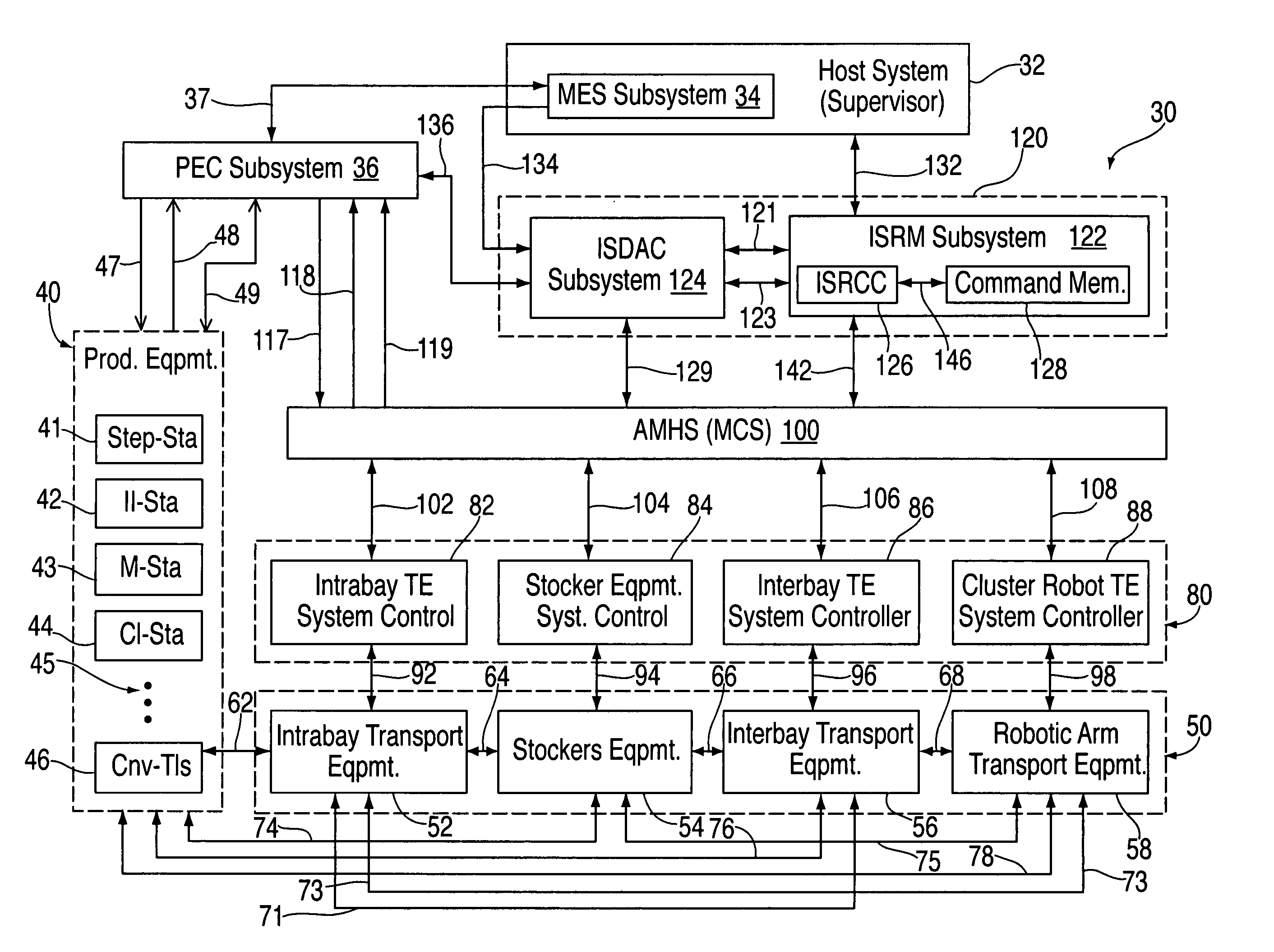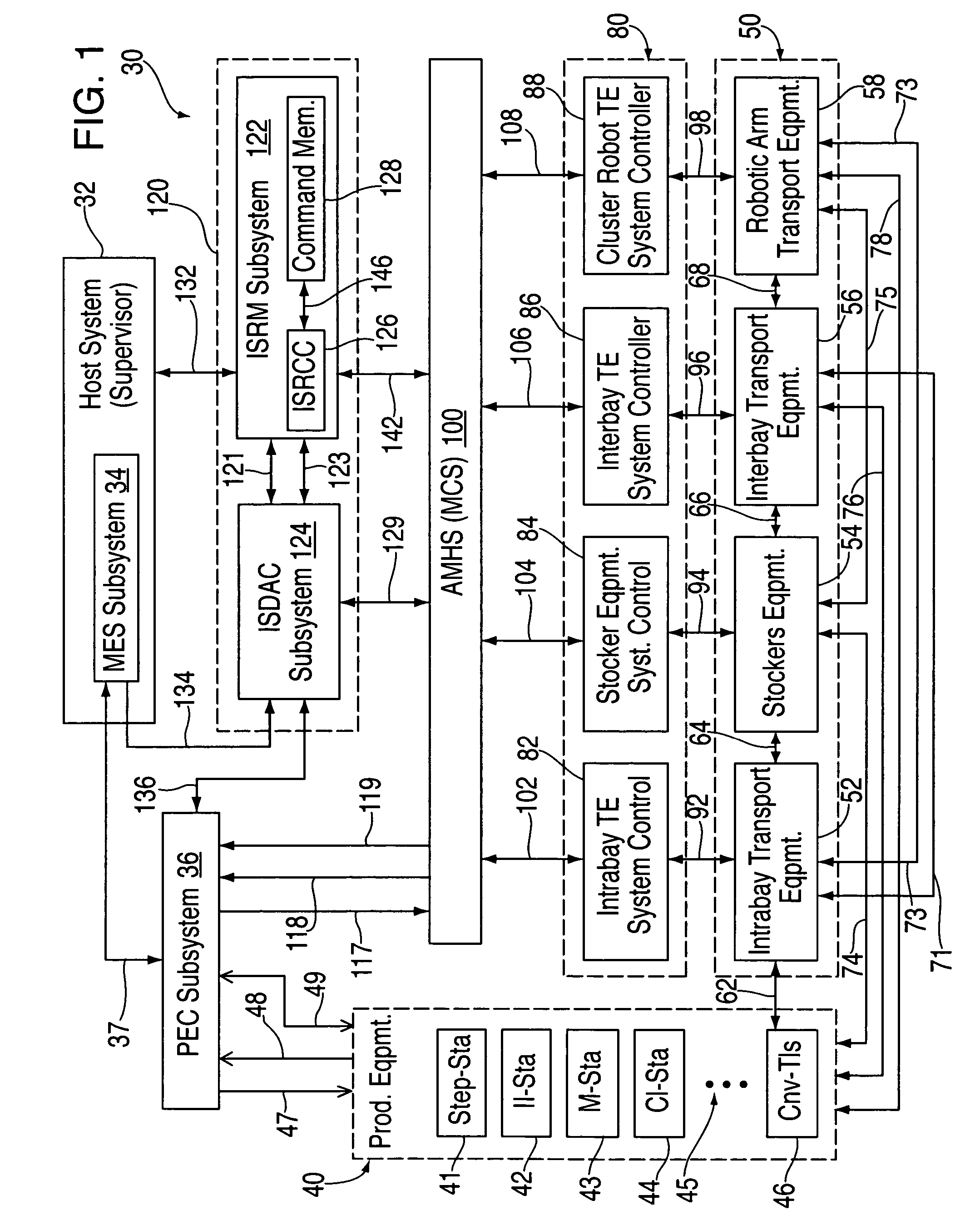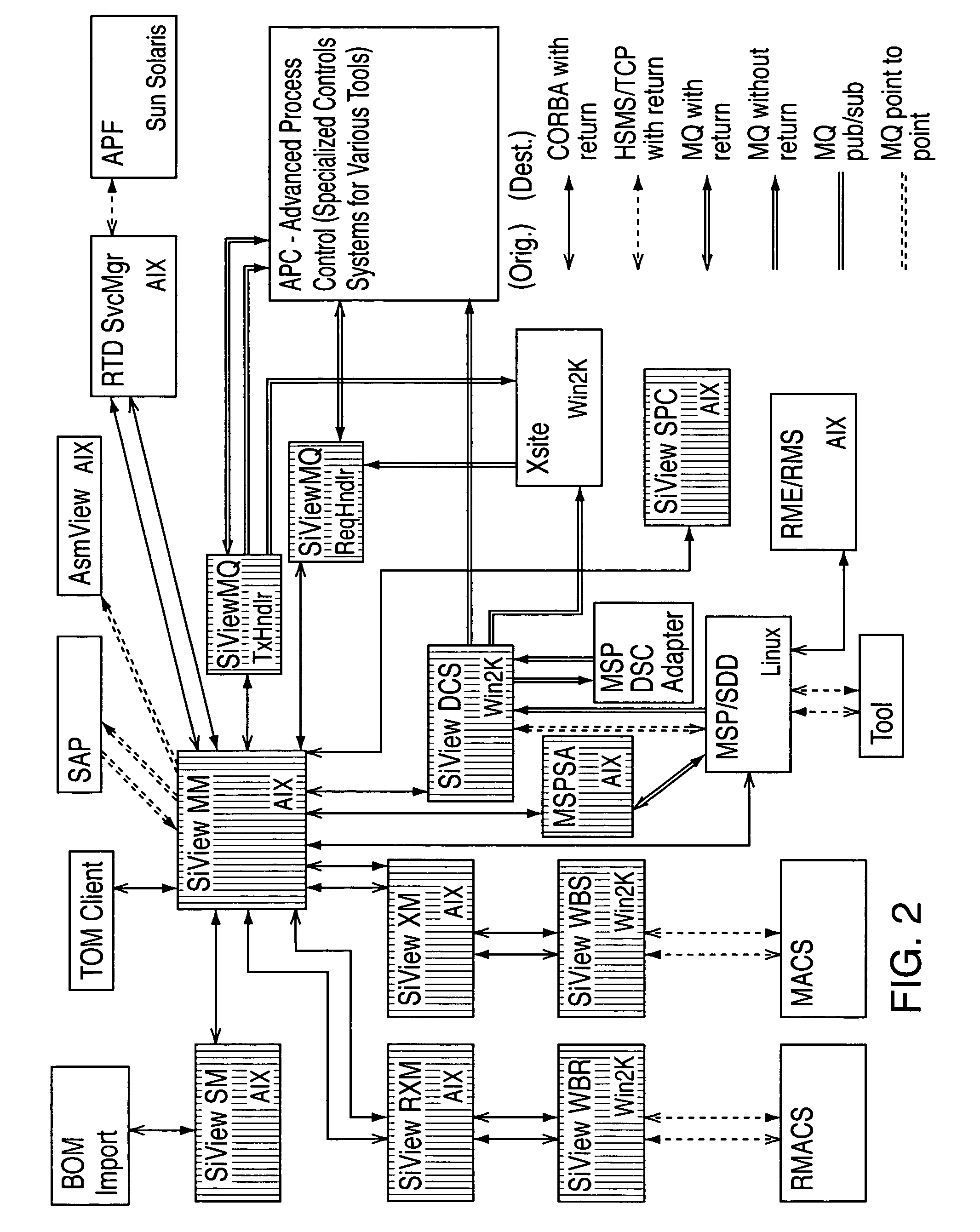Method and system for automating issue resolution in manufacturing execution and material control systems
a technology of manufacturing execution and material control system, applied in the direction of program control, total factory control, instruments, etc., can solve the problems of continuous performance of equipment and systems (e.g., percentage up-time), error conditions, and how long can a tool, carrier or other piece of equipment be expected to run, so as to reduce productivity, increase productivity, and speed up the effect of turn around tim
- Summary
- Abstract
- Description
- Claims
- Application Information
AI Technical Summary
Benefits of technology
Problems solved by technology
Method used
Image
Examples
Embodiment Construction
[0033]The present invention is illustrated and described herein in connection with certain illustrative embodiments, with the understanding that the teachings of the present disclosure are considered to be exemplifications of the principles of the invention and the associated functional specifications required for implementation of the present invention and its several facets. However, it should be appreciated that the systems and methods of the present invention may be implemented in still different configurations and forms, and that other variations thereof are possible, based on the teachings herein.
Part I—General System Overview
[0034]To better understand the systems and methods of the present invention, it is useful to consider, as shown in FIG. 1, a simplified block diagram showing an exemplary known factory automation (FA) system, sometimes called a Computer Integrated Manufacturing (CIM) system, in which the system of the present invention, shown in summary form in dashed blo...
PUM
 Login to View More
Login to View More Abstract
Description
Claims
Application Information
 Login to View More
Login to View More - R&D
- Intellectual Property
- Life Sciences
- Materials
- Tech Scout
- Unparalleled Data Quality
- Higher Quality Content
- 60% Fewer Hallucinations
Browse by: Latest US Patents, China's latest patents, Technical Efficacy Thesaurus, Application Domain, Technology Topic, Popular Technical Reports.
© 2025 PatSnap. All rights reserved.Legal|Privacy policy|Modern Slavery Act Transparency Statement|Sitemap|About US| Contact US: help@patsnap.com



